Introduction
Grooming your dog is vital for their health and appearance. It helps keep their coat shiny and skin healthy. Plus, grooming creates a special bond between you and your furry friend. In this article, you’ll find practical tips to make grooming easier and more enjoyable for both of you.
Summary and Overview
Regular grooming is essential for dogs of all breeds. It enhances hygiene, prevents skin issues, and allows for important health checks. Grooming also strengthens the connection between you and your dog, making it a rewarding experience. In this guide, we’ll cover various topics, including brushing techniques, bathing frequency, nail care, ear cleaning, and dental hygiene. Each section will provide practical advice to help you maintain your dog’s overall well-being, ensuring they look and feel their best.
Speaking of brushing, the Hertzko Self Cleaning Slicker Brush is a game changer for keeping your dog’s coat healthy and mat-free. No more wrestling with clumps of fur—just a simple press of a button and voila! Clean and ready for the next grooming session!

The Importance of Grooming Your Dog
Why Grooming Matters
Grooming plays a crucial role in your dog’s health and comfort. Regular grooming helps prevent matting, which can lead to painful skin infections. It also allows you to check for parasites, like fleas and ticks, that can affect your dog’s health. According to studies, around 25% of dogs suffer from skin issues if they aren’t groomed regularly. Grooming is not just about looks; it’s about maintaining dog hygiene and ensuring their skin stays healthy. Additionally, routine grooming fosters a deeper bond between you and your pet, as it involves close interaction and trust. Establishing a consistent grooming routine can make a significant difference in your dog’s overall well-being.
For a fresh and clean pup, consider using Earthbath All Natural Pet Shampoo. It’s gentle on their skin and tough on dirt! Your furry friend will thank you with wagging tails and cuddles!
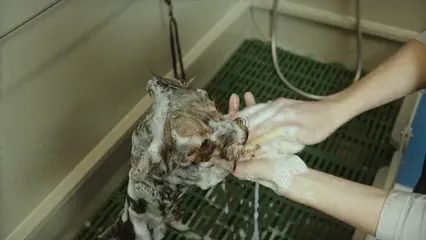
Essential Dog Grooming Tips
1. Regular Brushing
How Often and Why
Brushing your dog is crucial for maintaining a healthy coat. Different coat types have varying needs. Short-haired dogs benefit from brushing every week to remove loose hairs. Medium-coated breeds should be brushed every few days, while long-haired dogs require daily attention. Regular brushing helps reduce shedding and prevents matting, which can be painful.
Use the right tools for effective brushing. A slicker brush is great for long coats, while a rubber bristle brush works well for short-haired dogs. By brushing regularly, you can also check for skin issues or parasites. Consider creating a brushing schedule to stay consistent and keep your furry friend looking sharp.
And if you’re looking for a complete grooming solution, the Dog Grooming Scissors Set can be a lifesaver. Perfect for those tricky spots, these scissors will make your pup look like they just stepped out of a doggy salon!
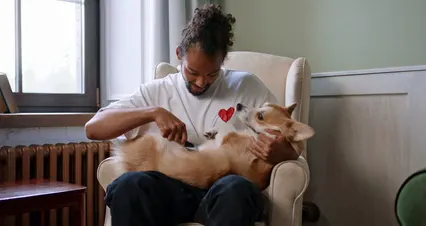
2. Bathing Your Dog
Frequency and Techniques
Bathing your dog is essential for hygiene, but frequency matters. Generally, dogs should be bathed every two to three months. However, this may vary based on their activity level and coat type. Highly active dogs may need more frequent baths, while less active breeds can go longer.
Choose a dog-specific shampoo to avoid skin irritation. When bathing, wet your dog thoroughly, apply shampoo, and massage gently, avoiding their eyes and ears. Rinse thoroughly to prevent residue buildup. Establishing a bathing routine ensures your dog stays clean and comfortable.
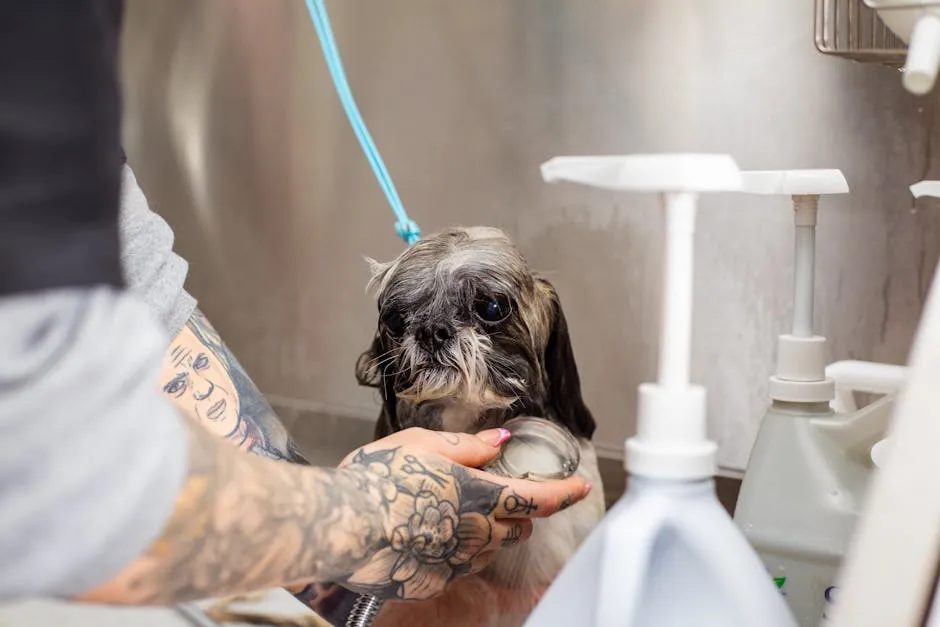
3. Nail Care
Importance of Trimming
Keeping your dog’s nails trimmed is vital for their health. Overgrown nails can lead to pain and mobility issues. Check your dog’s nails regularly, especially if you hear clicking on hard surfaces. If nails are too long, it’s time for a trim.
Use clippers designed for dogs, and be cautious to avoid cutting the quick, which is painful. Look for signs like splaying or discomfort when walking. Trimming should be done every few weeks. Regular nail care helps keep your dog comfortable and healthy, so make it a routine practice.
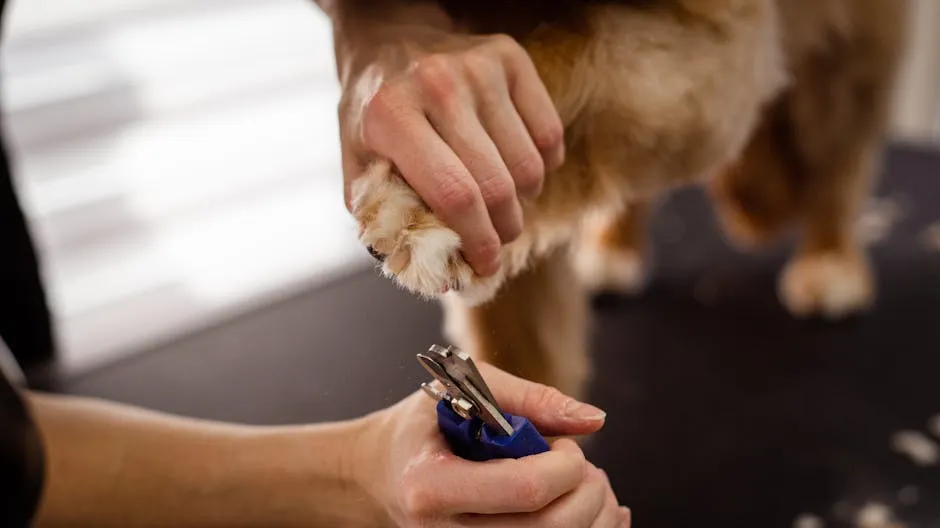
4. Ear Cleaning
Keeping Ears Healthy
Regular ear cleaning is essential for your dog’s health. Dogs with floppy ears, like Spaniels and Basset Hounds, are more prone to ear infections. Check for signs like redness, swelling, or unusual odors. If you notice these symptoms, consult your vet promptly.
To clean your dog’s ears safely, use a vet-approved ear cleaning solution. Soak a cotton ball in the solution, then gently wipe the visible parts of the ear. Avoid inserting anything deep into the ear canal, as this can cause injury. Aim to clean their ears about once a week, adjusting frequency based on their needs.
For effective ear care, the Vet’s Best Ear Relief Wash is an excellent choice. It helps soothe and clean, keeping those floppy ears healthy!
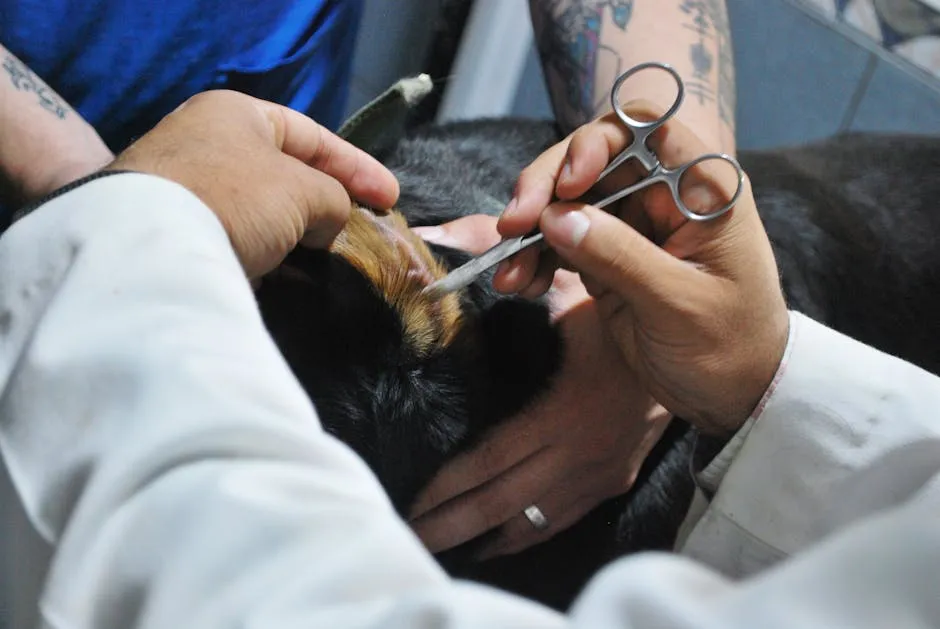
5. Dental Hygiene
Importance of Oral Care
Maintaining your dog’s dental hygiene is vital for their overall health. Poor oral care can lead to serious issues, including gum disease and tooth loss. Aim to brush your dog’s teeth at least two to three times a week. This routine helps remove plaque and keeps their breath fresh.
Use a dog-friendly toothbrush and toothpaste. Never use human toothpaste, as it can be harmful. Introduce brushing gradually; start by rubbing their gums with your finger. Once they’re comfortable, switch to a toothbrush.
For a fantastic dental care option, check out Nylabone Advanced Oral Care Dog Toothpaste. It’s specially formulated to keep your dog’s teeth sparkling clean and breath fresh!
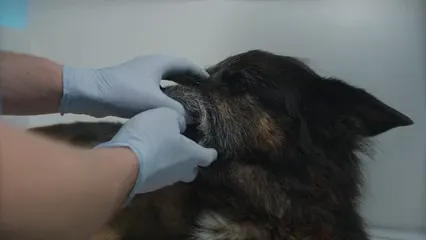
Training Your Dog for Grooming
Making Grooming a Positive Experience
Training your dog to enjoy grooming is key to a smooth experience. Start early, ideally when they are still a puppy. Use patience and positive reinforcement, like treats and praise, to create a positive association with grooming tools.
Introduce brushes and clippers gently. Allow your dog to sniff them before using them. Keep grooming sessions short at first to prevent overwhelming them. Gradually increase the duration as they become more comfortable.
For a little extra encouragement, consider using a Dog Training Clicker. It’s a fantastic tool for positive reinforcement, making training sessions fun and effective!
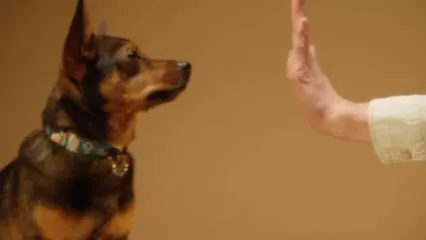
Breed-Specific Grooming Needs
Tailoring Grooming to Your Dog’s Breed
Every dog breed has unique grooming needs. This makes it essential to research the grooming requirements for your specific breed. For instance, poodles require regular clipping and brushing to prevent matting. In contrast, bulldogs have short coats that need less frequent grooming, but they still benefit from regular baths to keep their skin healthy.
Selecting the right tools is crucial. A slicker brush works wonders for long-haired breeds, while a rubber brush is perfect for short-haired dogs. Understanding your dog’s breed helps you choose the best products and techniques for their grooming routine.
For tailored tips and techniques, consult breed-specific resources or grooming guides. They provide valuable insights to keep your furry friend looking and feeling their best. For example, check out our recommended grooming schedules for double-coated dogs throughout the year to ensure you are on the right track.
Understanding the grooming needs of your dog’s breed is essential for effective care. recommended grooming schedules for double-coated dogs throughout the year
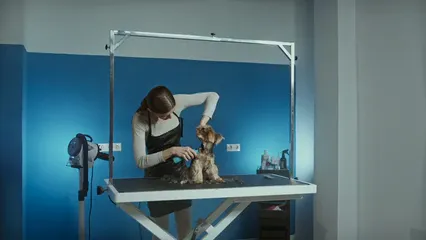
Conclusion
Regular grooming is vital for your dog’s health and happiness. It prevents skin issues and keeps their coat shiny. Plus, grooming sessions strengthen the bond between you and your pet.
Implement the tips shared in this guide to enhance your grooming practices. Make grooming a fun and rewarding experience for both you and your furry companion. And don’t forget to check out the PetFusion Ultimate Dog Bed for post-grooming relaxation. Your dog deserves nothing but the best!
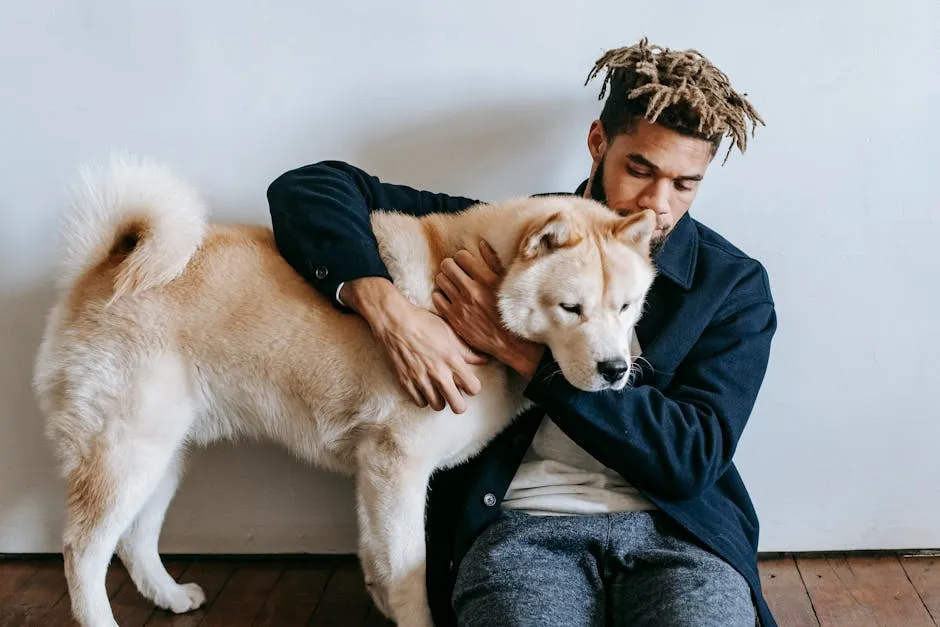
FAQs
Please let us know what you think about our content by leaving a comment down below!
Thank you for reading till here 🙂
All images from Pexels





